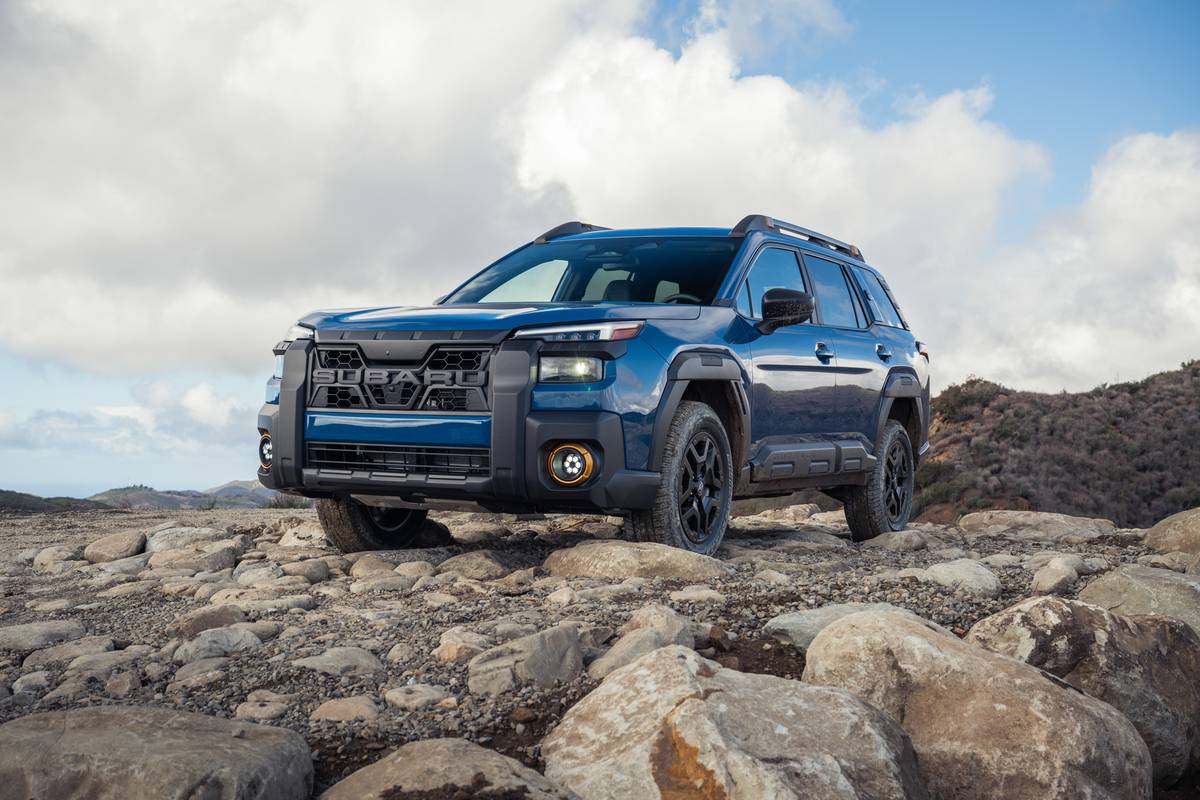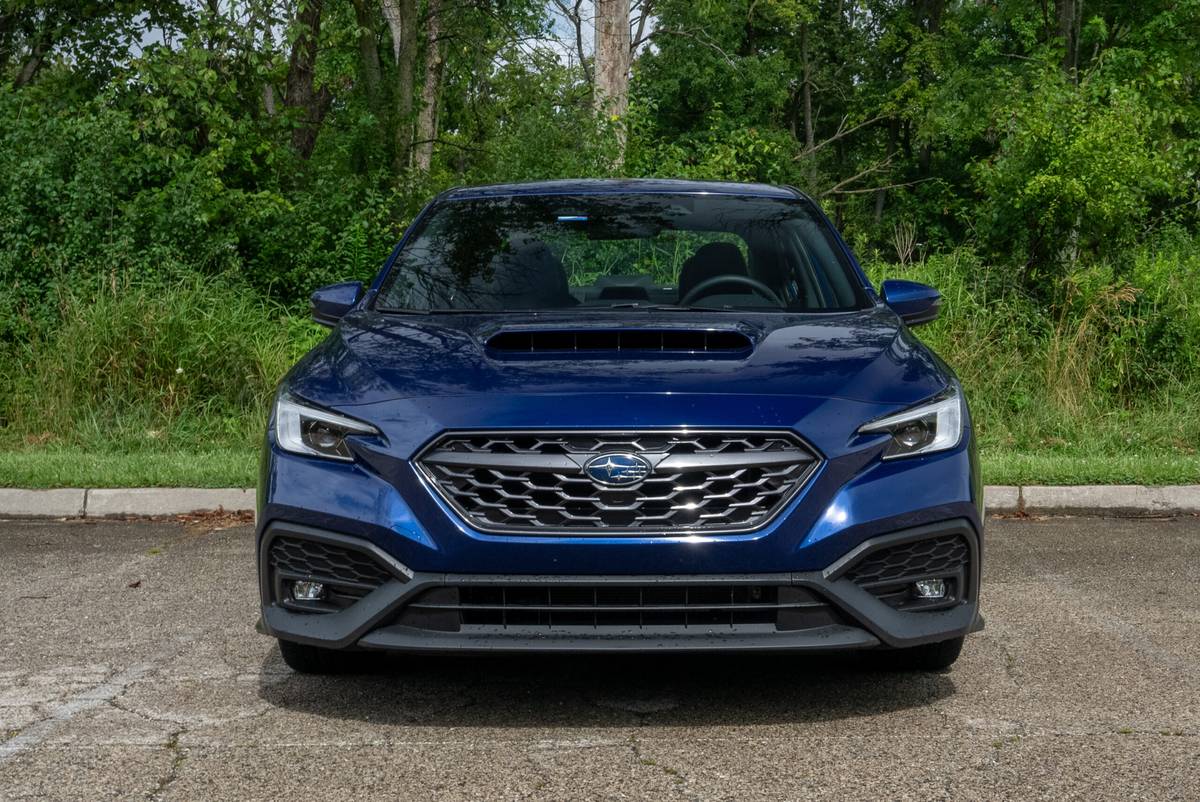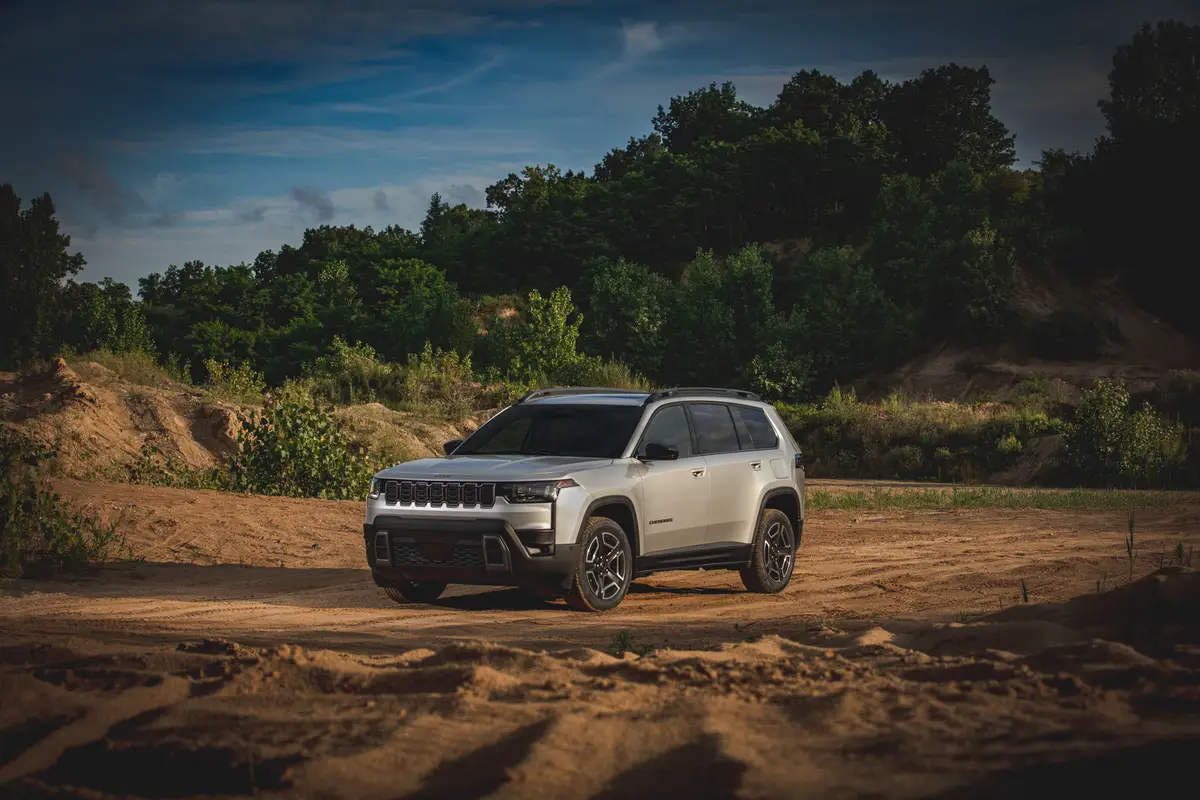Our view: 2002 Chevrolet Camaro
Shed a tear, turn a key or squeal your tires in salute: The Camaro is coming to an end. It doesn’t seem that long ago that General Motors’ original muscle ride first rolled off the assembly line, starting a trend of pony cars that eventually would include the Monte Carlo and Firebird, and would forever change the way we looked at a guy named Smokey.
Alas, it is nearly over. Maybe it’s for the best.
Don’t get us wrong. The Firebird and Camaro have long held a place in the hearts of American thrill seekers, mainly because they were icons of straight-line muscle – a poor man’s Corvette, a ball of fire at a reasonable price, a good excuse to pull up to the light and light up the tires.
But after a 35-year run (that will end next year when the last Firebird and Camaro roll off the line in St. Therese, Quebec), GM has decided that the bottom line no longer merits the brawn. A few spins in the last Camaro – specially done up as an SS Special Edition – may give us a glimpse into a few reasons why.
For starters, the Camaro hasn’t changed much. It’s still very much the same car it was years ago – lots of throttle and NASCAR roar, a throwback to a time when men wanted to strut their stuff on Saturday nights down Main Street. Beef, if you will, without the trimmings. That’s changed.
European cars have refined the whole idea of well-rounded performance and North American manufacturers, like Ford with the Mustang, have followed suit.
What that means is appealing to more than one group of drivers and offering more than one engine. A novel idea during a time when performance also includes the gas gauge.
For Ford, that’s meant softening the ride of the Mustang, altering the styling and laying off the power by offering four-cylinder versions of its muscle car. Four-cylinder muscle? Laugh all you want. It sells.
The latest sales figures are the best example. Through August of this year, GM had sold 38,54 Camaros and Firebirds in the U.S., while Ford had sold 112,242 Mustangs. With those kind of numbers, it’s no reason GM’s plants are grinding to a halt – even if the Camaro can still outright fly.
In its purest form, the Camaro is a street fighter – pure guts and guns. Twist the key and feel the burble under the seat. Step on the accelerator and feel your head smack off the headrest. With the SS’s 325 horsepower V-8 cranking out 340 foot-pounds of torque, it doesn’t take long to get the SS message: Stomp on it and go. And it’s a good thing the V-8 hasn’t suffered the effects of aging. This is still a hefty car, even with two doors. While other GM cars have seen the positive effect of downsizing, the Camaro is still bigger and heavier than it was when it was first introduced.
Without a redesign the last 10 years, it’s also as long as ever – about two inches shorter than some full-size luxury sedans. (One auto critic recently compared it to a BMW 740i, saying though the Camaro is actually two inches shorter than the German car, but has nearly a foot less leg room. Ouch!) Not many will settle for those kind of numbers anymore. And the comparison is no joke. The Camaro, although still dreamy under the hood, is a crunch with more than two inside.
During our one-week test, I found it difficult to get comfortable sitting in a front seat that moved 10 ways except into the right one. A three-hour trip meant a sore hide. Rear-seat passengers were downright miserable having to squeeze under the rear hatch with no leg room to speak of after they shoehorned themselves into the cupped seats.
Up front, the interior is still very much the Camaro you might remember: Simple, well-positioned gauges that point the driver’s way without any real hint of sophistication – more cheap and plastic. And, seated inside, visibility is still limited through a sharply raked windshield.
On the plus side, the six-speed Hearst shifter is a blast, more of a throwback to a gentler time of gas guzzling, beefy rides that demanded yo lam your right foot as you worked the oversized gear shifter. Zero to 60 is like riding a lightning bolt – about five seconds.
Outside, with a twin exhaust positioned in the center of the back end, and with low-profile tires and a sleek body that is signature Camaro, this is still an attractive ride that will get looks from every macho-minded passerby – especially at the pump were you’ll be spending lots of time. Yes, this is still a guzzler. In the city, the Camaro averaged just over 14 mpg. On the highway it didn’t get much better (17 mpg).
Handling is still tight, razor-sharp around bends in the road, and a true sports-car feel through a responsive steering setup. But you’ll feel every pot hole and bruise in the road as the Camaro shakes and shimmies. Stopping power is awesome on a set of thick rotors and the addition of ABS makes this a 21st-century approach to safety.
The price will also be a reminder how much things have changed. Even in base mode, the Camaro SS is a $29,000 machine, a hefty price to pay for a piece of nostalgia.
Don’t feel like shelling out that much? Don’t feel too bad. With former Chrysler exec Bob Lutz now calling the product shots at GM, don’t be too surprised if the Camaro makes an appearance again in the future – maybe with the Firebird – as a completely different model in 2004 or beyond. It can only be a good thing. The Camaro is past its prime in a market few are still interested in supporting.
The good news? Like a lot of other things, at some point what’s old is usually always new again.
For Camaro’s sake, let’s just hope next time it’s a bit better.
2002 CHEVROLET CAMARO SS
Rating: 2.5
High Gear: Fun, fast and furious, the last of a dying breed goes out with a snort and a stomp on the accelerator. Forget anything else: It’s all about the V8.
Low Gear: Low-grade interior materials, a NASCAR-like sound and a style that’s as old as the tradition may be enough for some to turn off the key forever.
Vehicle type: Rear-wheel-drive, front engine, two-door, four-passenger sports coupe.
Standard equipment: Five-speed manual transmission; front independent suspension; front- and rear-stabilizer bar; ventilated front disc; solid rear disc brakes; ABS; child seat anchors; anti-theft system; engine immobilizer; power mirrors; power steering; tilt-adjustable steering wheel; air conditioning; Monsoon premium sound system
Competition: Ford Mustang, Chevrolet Corvette, Mitsubishi Eclipse, Pontiac Firebird
Engine: 325 horsepower, 5.7-liter V8
Torque: 340 foot-lbs. @ 4,000 rpm
Wheelbase: 101.1 inches
Length: 193.5 inches
MPG rating: 19 mpg city/28 mpg highway
Manufactured: Canada
Warranty: Basic warranty is three years/36,000 miles; the drivetrain is three years/36,000 miles; roadside warranty is three years/36,000; and rust protection is six years/100,000 miles.
Base price: $28,980
Price as tested (including options, destination and delivery): $28,980
Latest news



